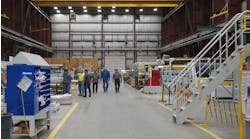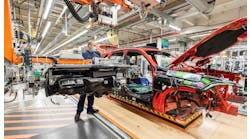How to Improve Your Manufacturing Culture to Land the Best Talent
Does the traditional, conservative, “me-too” approach of many manufacturers hold them back? What sort of incremental changes could a traditional manufacturer implement to foster a more progressive culture?
First let’s take a look at what characterizes the traditional culture of manufacturing. It is perhaps easier to define what it is not. It’s not a high-tech, Silicon Valley culture. It’s not a venture capital or Wall Street culture.
One long-time manufacturing executive client describes it as a command-and-control environment, with clear reporting lines and functional silos. Others have characterized it as a “You don’t understand” and “It won’t work here” attitude.
In a progressive culture, on the other hand, a leader will humbly say, “We don’t know what we don’t know. Let’s investigate and find out.”
Another manufacturing industry executive—working in what he considers a progressive manufacturing culture—said his organization is collaborative, compared to previous manufacturers he’d worked for that were much more traditional.
So how does traditional culture impact manufacturers in terms of talent? For starters, it promotes the workplace mentality of, “Keep your head down, keep your mouth shut, and keep your job.”
One corporate client of ours that is actively trying to change its culture has an inordinately high number of people who have been there 25, 30, even 40 years. Unfortunately, many of them have enjoyed such longevity not by being progressive or innovative, but by going with the flow. The result has been mediocre performance by the business over the past decade, with complacency being the norm and employees who are not challenging themselves or those around them.
The traditional manufacturing culture also brings a high probability of talent gaps and succession planning problems. Almost 75% of our clients who engage us to replace an incumbent who’s been in a role for more than five years--and who have no viable internal candidates under consideration--characterize themselves as fairly traditional manufacturing cultures. They’ve done a poor job developing talent and challenging high-potential individuals with developmental roles to round out their abilities and prepare them for the next level of leadership.
Perhaps the most pervasive challenge posed by a traditional manufacturing culture is difficulty attracting young talent. Let’s face it--when graduating engineers have a choice between a forward-thinking culture and a stodgy traditional manufacturing culture, their choice is easy.
Manufacturers must change and evolve to foster a more progressive culture and compete well into the future. Does that mean there should be nap rooms? No. An espresso bar next to the electroplating line? Pool tables next to the paint booths? No, and no. There are more subtle, incremental changes that can be implemented to foster a more progressive, innovative, and creative culture. And it starts at the top with the leadership team.
Some simple ideas:
Foster idea sharing. A client once shared that any time he’d go into a meeting looking for idea generation, the first thing he would do is share a story of a catastrophically bad idea of his that ended up costing his company a lot of money. It was an anecdote that got people talking. When people hear from leaders an openness and encouragement to share an idea, and the willingness to fail and learn, they’re more willing to open up with their own ideas to improve the business.
Beyond meetings, one way to promote idea sharing is through online forums internally. People can offer up ideas as they arise, revisit them later, piggyback on others, and crowdsource unique elements to formulate the best version of an idea. Then make the case to execute!
Scrap the traditional annual review. But review people all the time. Regular feedback, informal and formal, promotes a culture of engagement and continuous improvement.
It’s easy for things to get impersonal. As companies have eliminated entire layers of leadership, the number of direct reports per supervisor has skyrocketed. But a truly engaged and effective leader needs to have frequent, regular, meaningful dialogue with his team.
A good rule of thumb: if you’re thinking it, say it. A good leader is looking at results and output from the team and providing feedback in the moment. Have a quick, 5-minute stand-up meeting. If a team member is remote based, do a quick video call.
With simple (and free) tools like SurveyMonkey, a leader can provide quick feedback in a review delivered to an employee’s email monthly or even weekly. This kind of regular feedback makes course corrections seem very minor—almost imperceptible-- compared to a year-end review full of surprises.
And whenever possible, catch people doing it right and celebrate it.
Communicate, communicate, communicate. And once you think you’ve communicated enough, communicate some more. Use newsletters, use town hall meetings for each shift, use any means necessary. The difference between an engaged workforce and an apathetic one is often little more than a lack of information. The more people know about how the business is performing—good or bad—the more engaged and likely to contribute they become.
Information flow needs to start at the top and cascade down throughout all levels of the organization. One client shared that since a new CEO joined the parent company and stressed collaboration and open communication, they’ve been holding monthly “all-hands” meetings and using Jive Software, which he characterized as a sort of intracompany Facebook for encouraging collaboration. Not surprisingly, employee engagement, morale and innovation are all up.
Invest in your people. Offer continued training and cross-training. In a recent Forbes survey of 130 manufacturers, the most important skill for the next generation of employees is data analysis. As the Internet of Things and big data permeate the shop floor, provide the tools and training for your workforce to leverage those advances. Break people out of their siloes. Get them working on cross-functional teams where they can experience and understand various moving parts of the business. “An accountant, an engineer, and a salesman” should not be the start of a joke. Bring these people together to solve a business problem, and you’ll be amazed at the results as their different perspectives come together and spark creativity. As one manufacturing executive put it, “95% of the solutions we need to the problems we face today lie within the hearts and minds of the people we already have.”
Create a collaborative physical environment. Collaboration encourages innovation. In a recent article in the Dallas Business Journal, Toyota’s North American CEO Jim Lentz explained the environment they are creating at their new headquarters in Plano, Texas. Currently, their traditional office space in California is 80% personal workspace / 20% primarily conference rooms. In their new facility, it will be 50% personal workspace / 50% collaborative space. “It’s much more of an interactive space,” said Lentz. “We are going to try to be a catalyst for getting people out of their offices, not emailing back and forth to each other, but actually sitting down, collaborating and communicating because we believe that’s where innovation takes place.”
Ultimately, culture change takes time. There’s not a magic button you can press to transform things overnight. But many manufacturers would benefit from taking a long, hard look in the mirror at how their cultures are positioning them for success—or failure—in the future.
Mike Morrow is a partner at Transearch International executive recruiting firm, in its Industry and Energy practices.




